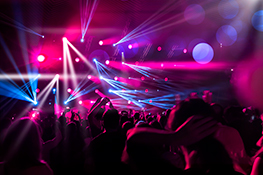The Future of Stage Lighting: A Deep Dive into Mini-LED Technology
Introduction: Beyond the Bulb
The world of stage lighting is constantly evolving, driven by the relentless pursuit of brighter, more vibrant, and more energy-efficient solutions. While LED technology has revolutionized the industry, a new contender is emerging: mini-LED. This article explores the potential of mini-LED to redefine stage lighting, examining its advantages, applications, and the challenges it faces in becoming the industry standard.
Understanding Mini-LED Technology
Mini-LED technology utilizes arrays of significantly smaller LEDs than traditional LEDs, typically measuring less than 100 micrometers. This miniaturization allows for higher pixel density and greater control over light output. Unlike traditional LED fixtures that may use just a handful of larger LEDs, mini-LED displays can incorporate thousands, enabling incredibly precise control of brightness, color, and even individual pixel illumination. This granular control unlocks a new level of creative possibility for lighting designers.
The Advantages of Mini-LED in Stage Lighting
Several key benefits make mini-LED a compelling alternative to existing stage lighting technologies:
High Brightness and Contrast Ratio
Mini-LEDs offer significantly higher brightness and a vastly improved contrast ratio compared to conventional LEDs. This translates to bolder, more impactful visuals, especially crucial in large venues or outdoor performances.
Enhanced Color Accuracy and Gamut
The increased number of LEDs allows for finer control over color mixing, resulting in more accurate and vibrant color reproduction. Mini-LED displays achieve a wider color gamut, allowing for richer and more lifelike hues.
Improved Energy Efficiency
While maintaining high brightness, mini-LEDs offer better energy efficiency than many existing solutions, leading to cost savings and reduced environmental impact.
Superior Pixel Pitch and Resolution
The smaller size of the LEDs allows for a much higher pixel density, leading to crisper images and smoother transitions, crucial for video projection mapping and dynamic lighting effects.
Increased Durability and Lifespan
Mini-LEDs, due to their robust construction, tend to have a longer lifespan than other technologies, minimizing replacement costs and maintenance.
Applications of Mini-LED in Stage Lighting
The versatility of mini-LED technology opens doors to various applications:
Video Walls and Projection Mapping
Mini-LED displays are ideal for creating stunning, high-resolution video walls and seamless projection mapping experiences, transforming stages into immersive environments.
Architectural Lighting
The precise control offered by mini-LED allows for complex and creative architectural lighting designs, seamlessly blending lighting with the stage’s physical structure.
Special Effects and Dynamic Lighting
Mini-LEDs are capable of creating extremely fast and dynamic lighting effects, enabling a new level of visual storytelling and audience engagement.
Television Studio Lighting
The improved color accuracy and brightness of mini-LED make it a compelling option for television studios, guaranteeing superior picture quality.
Challenges and Future Outlook
While the potential is immense, challenges remain:
Cost
Currently, mini-LED technology is more expensive than traditional LED solutions. However, as production scales up, costs are expected to decline, making it more accessible.
Heat Management
The high density of LEDs requires efficient heat management to prevent overheating and maintain performance. Advances in heat sink technology are crucial for widespread adoption.
Conclusion: A Bright Future for Stage Lighting
Mini-LED technology promises a significant leap forward in stage lighting. Its combination of superior brightness, color accuracy, energy efficiency, and control opens new creative possibilities for lighting designers. While cost and heat management remain challenges, the advantages of mini-LED make it a strong contender to become a dominant force in the future of stage lighting, ushering in a new era of visual spectacle.


 Auditorium Construction Services
Auditorium Construction Services 